
Perhaps the week's highlight for most, especially guest Jair Bonilla, was a wonderful sighting of the Kaburini female. Stashed up high in the tree, she had not one but two impala kills that she frequently visited. While she does not have a specific name yet, she is referred to as the 'Kaburini' female as she is often spotted in that area. Although not seen at this sighting, it is confirmed that she also has two young cubs. They must be hidden quite well somewhere as they are very difficult to see. As the cubs are still vulnerable, she does her best to keep them away from any threat.

Though the word 'safari' means journey, sometimes you don't have to venture very far to see amazing things. One afternoon, Patrick, a Naturalist at Angama Mara, came and told me he had something to show me. Right near the Photographic Studio, by Tent 13, lives a very sweet bird. In a small, cup-shaped nest, lay a female African paradise flycatcher. This medium-sized songbird is a true champion of acrobatics in the African savannah, woodlands and forests. Later, not far from the area, on a walk, I spotted a male with a dragonfly in its mouth. The flycatcher is a skilled insectivore with a sharp beak and exceptional agility.


The treasures of the natural world come in all shapes and sizes. Right on the path to the Pavilion was a white-ringed atlas moth, a native of eastern Africa. This insect is a true giant of the moth world, with a wingspan reaching up to 13 centimetres (five inches), it's one of the largest of its species on the continent. Each wing lobe is adorned with an eye-catching 'eyespot', a translucent centre surrounded by a vibrant white and yellow ring. This dazzling display is considered a defence mechanism, to startle or confuse predators with the eyes of a larger animal. Despite their impressive size, white-ringed atlas moths have a short lifespan, living only as adults for a few days to focus solely on mating and laying eggs.
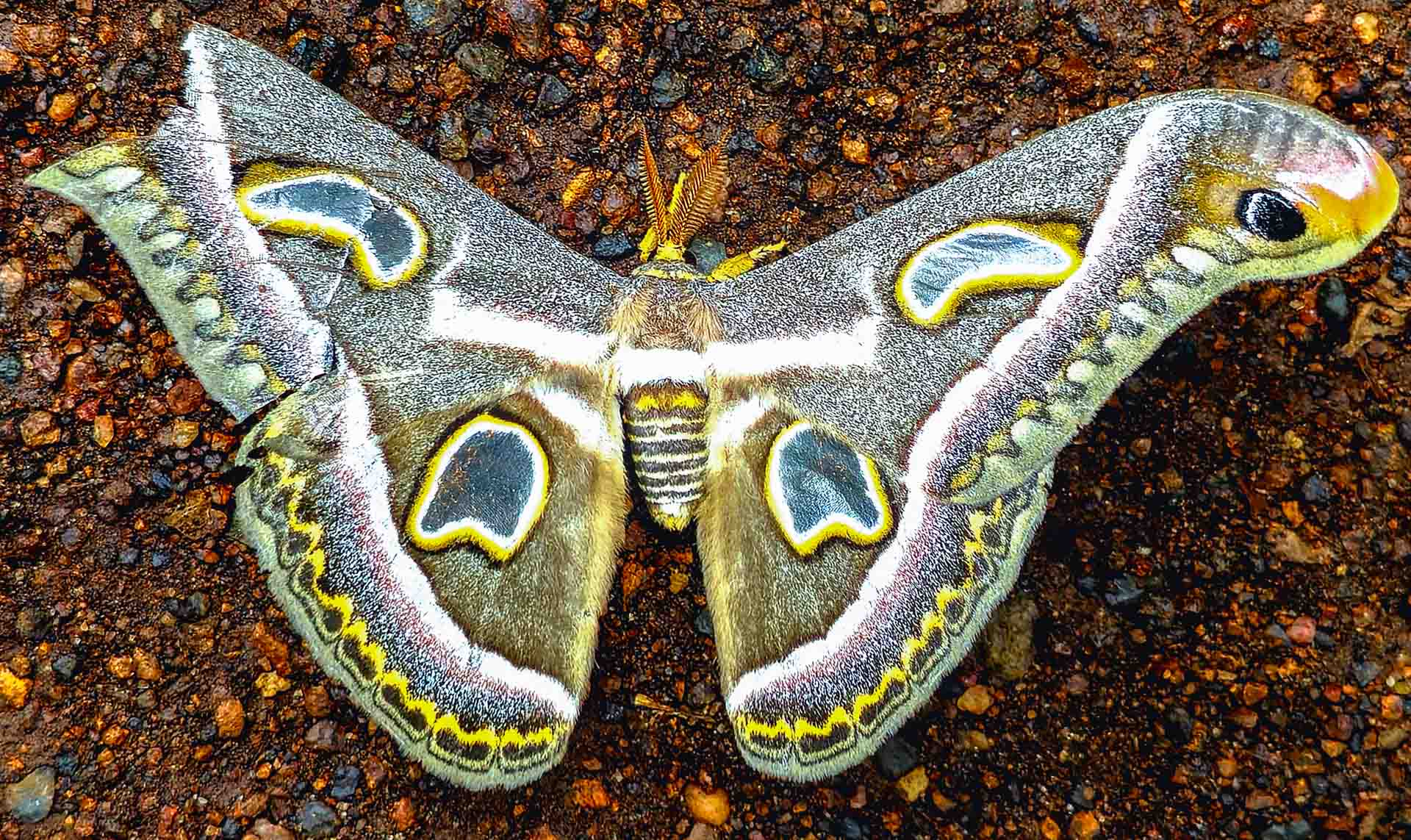
As mentioned in the last few blogs, the Angama lioness has been seen regularly just down the escarpment with her cubs. She and her family have started being referred to as the new Oloololo Pride by the Rangers. One day this week, she was in a bush with a kill, and we waited for hours listening to her and the cubs eating, but they never appeared. Later the next day, she was spotted in a tree — nothing new to her — but this time with the cubs. It is not common behaviour for lions to climb trees; not only has she learned to do this, but she has also taught her cubs this highly useful and unusual skill.


As there is no fence between the Mara Triangle, the Greater Mara Reserve and the Serengeti, we see animals cross back and forth all the time. Last week, one of the male cheetah brothers crossed the Mara River out of the Mara Triangle, and this week, we saw a young male who crossed the border into the Triangle from the Serengeti. Johnny, an Angama Guide, saw the cheetah and recognised its unique limp, so this cheetah has been in the Triangle before. Unlike most other cats, cheetahs are diurnal, so you will see them active during the day, and we are happy to see them moving freely around the Triangle.
–Andrew Andrawes
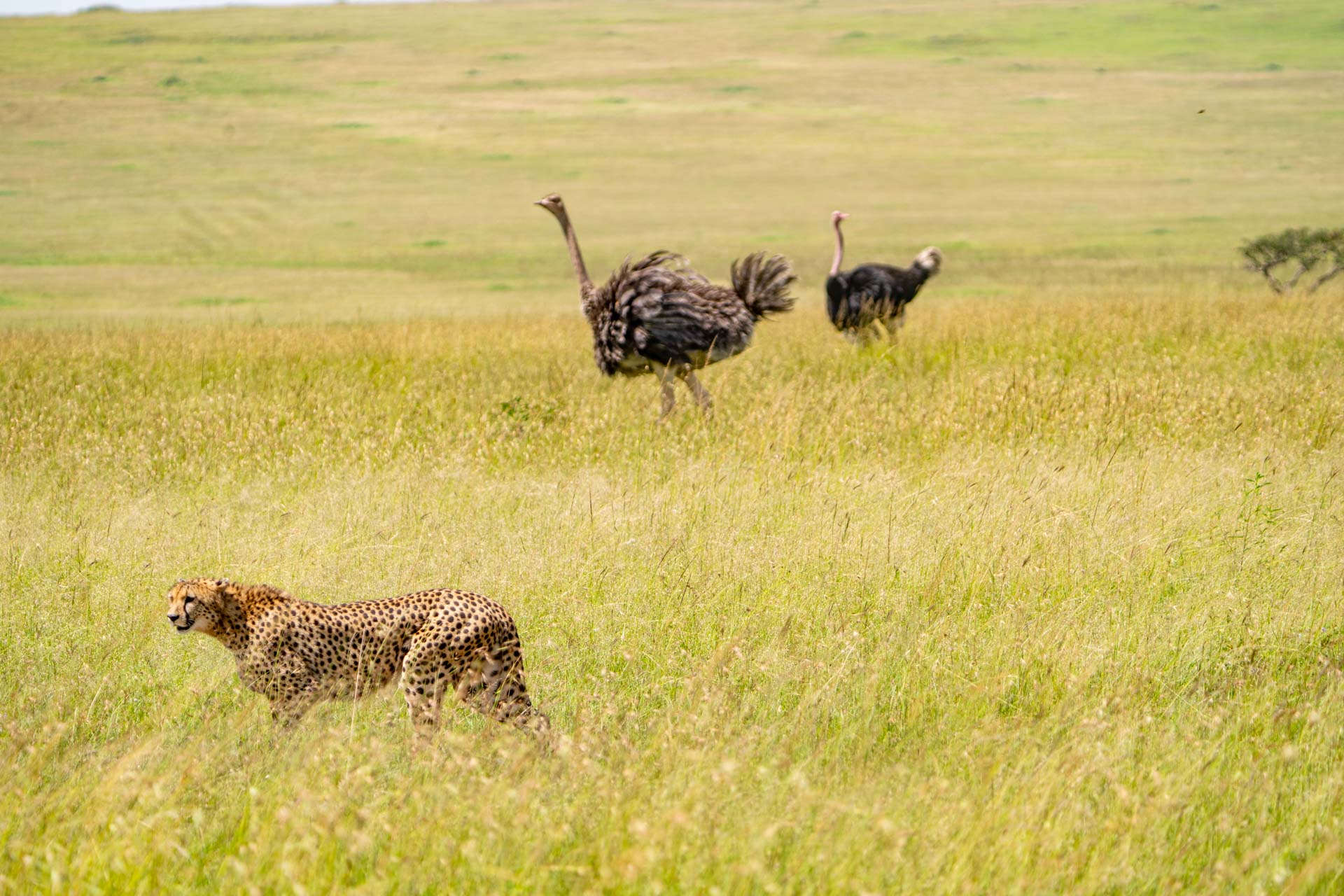
Exciting developments have unfolded in the lion world of Kimana Sanctuary this week — two lionesses, roughly two and a half years old, have joined our resident males. These two young lionesses are said to have broken off from a larger pride in the neighbouring Chyulu Hills, which was reported to equal as many as 18 individuals. Previously, we wrote about Osunash and Male 263 in Kuku Ranch, and it turns out the altercation they were involved in was with this pride, just a small distance from Kuku Ranch.
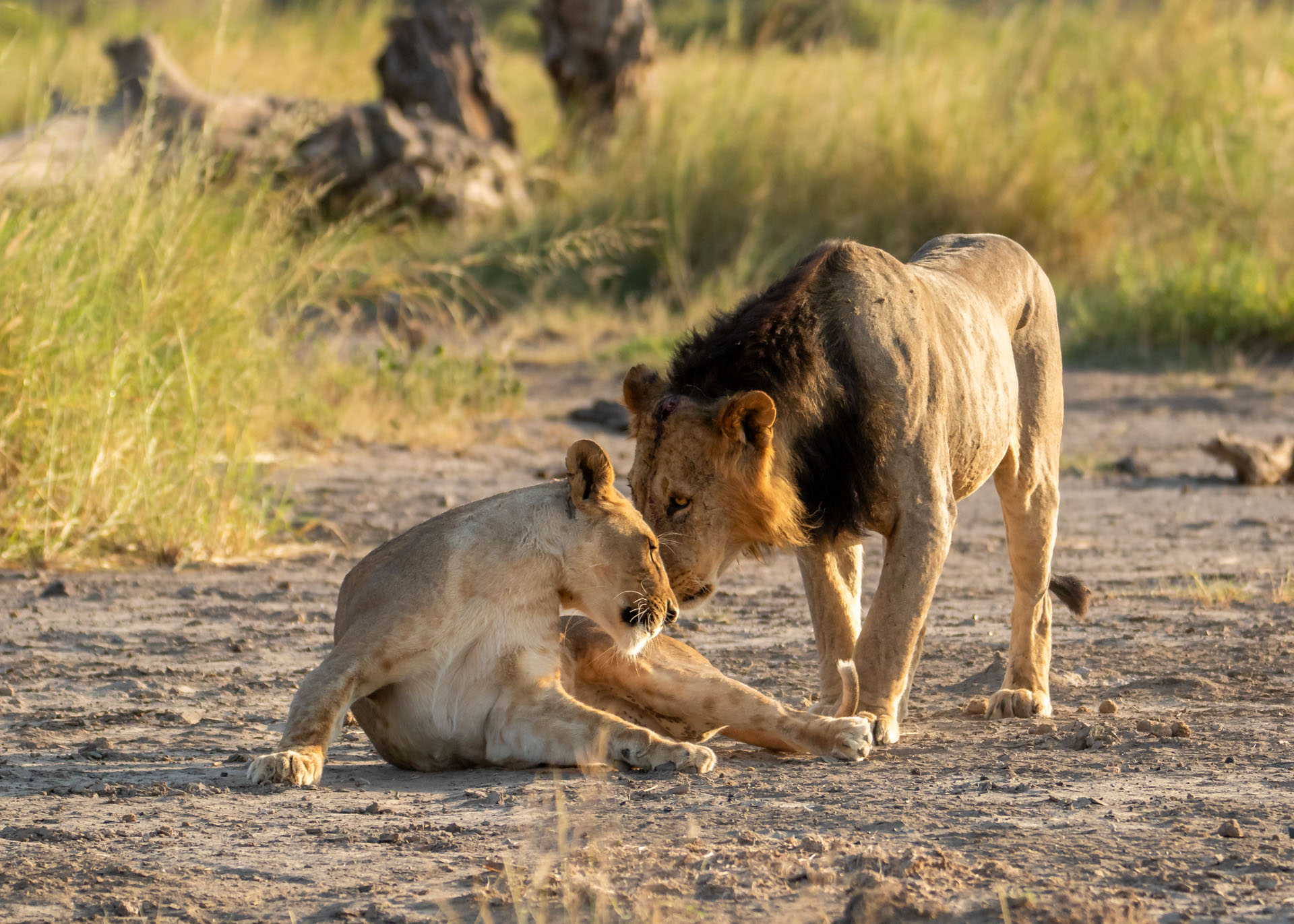
After Osunash and Male 263 returned to the Sanctuary, the two females, accompanied by two other young sub-adult males who were kicked out from the larger pride in Chyulus, soon followed them into the Sanctuary. According to Angama Guide Salash, when the two young males realised they had entered occupied territory, they promptly fled, leaving the two females, who are now both mating with Osunash and Male 263.
This development brings about very interesting, positive prospects for lion dynamics in Kimana Sanctuary. With the presence of females and an abundance of food, there is a high likelihood of pride formation — suffice it to say, we are all very excited about the possibility of a solid pride in the Sanctuary.
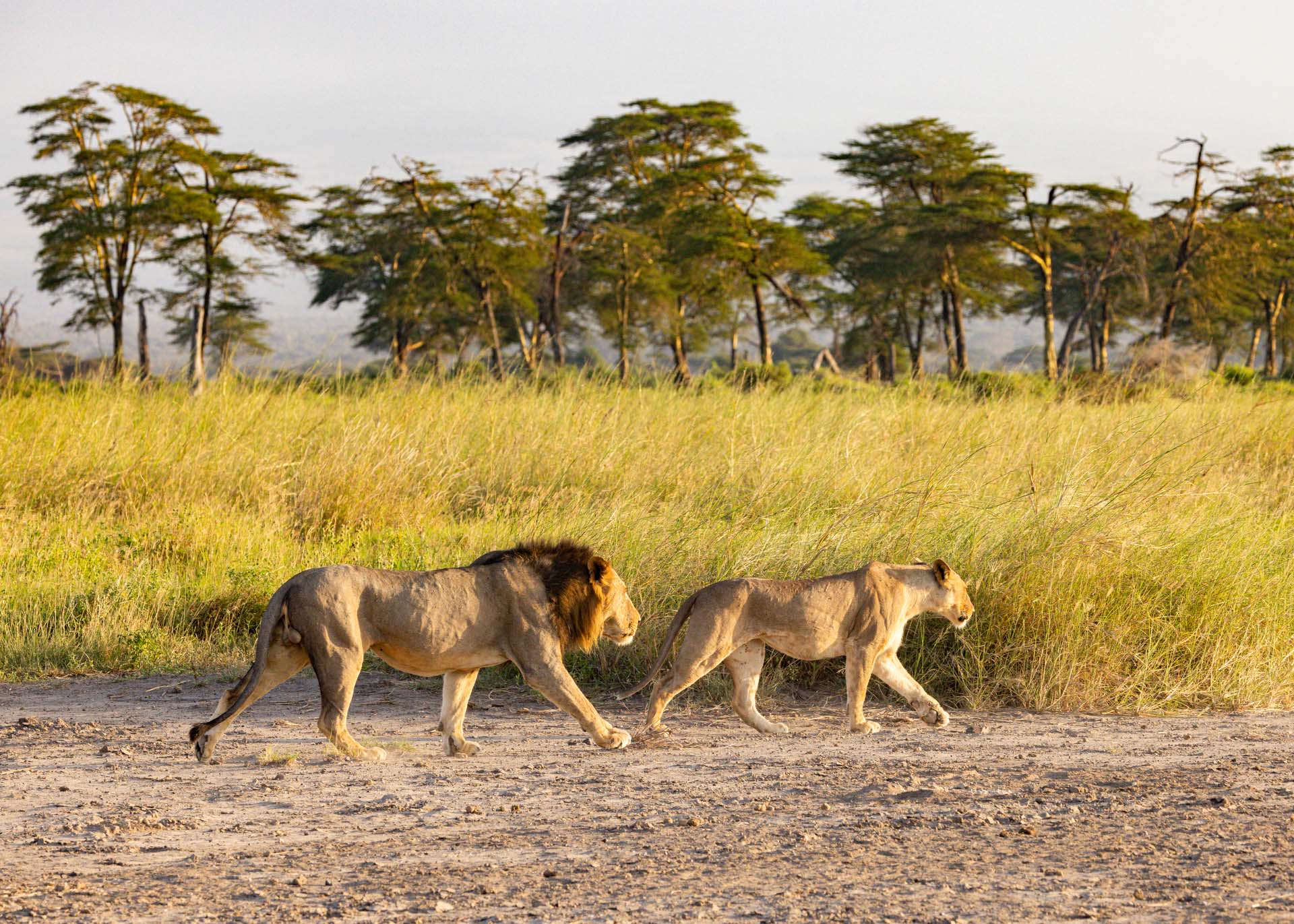
Verreaux’s eagle-owl stands out as one of Africa's largest and among the most impressive raptors. Its predominantly grey plumage and distinctive pink eyelids make it stand out from other large owl species worldwide. Around fifty percent of its known diet consists of mammals, while birds and insects make up the remaining portion. These birds are monogamous and territorial, with females notably larger than males. During the day, owls often roost together before embarking on solitary hunts at night.
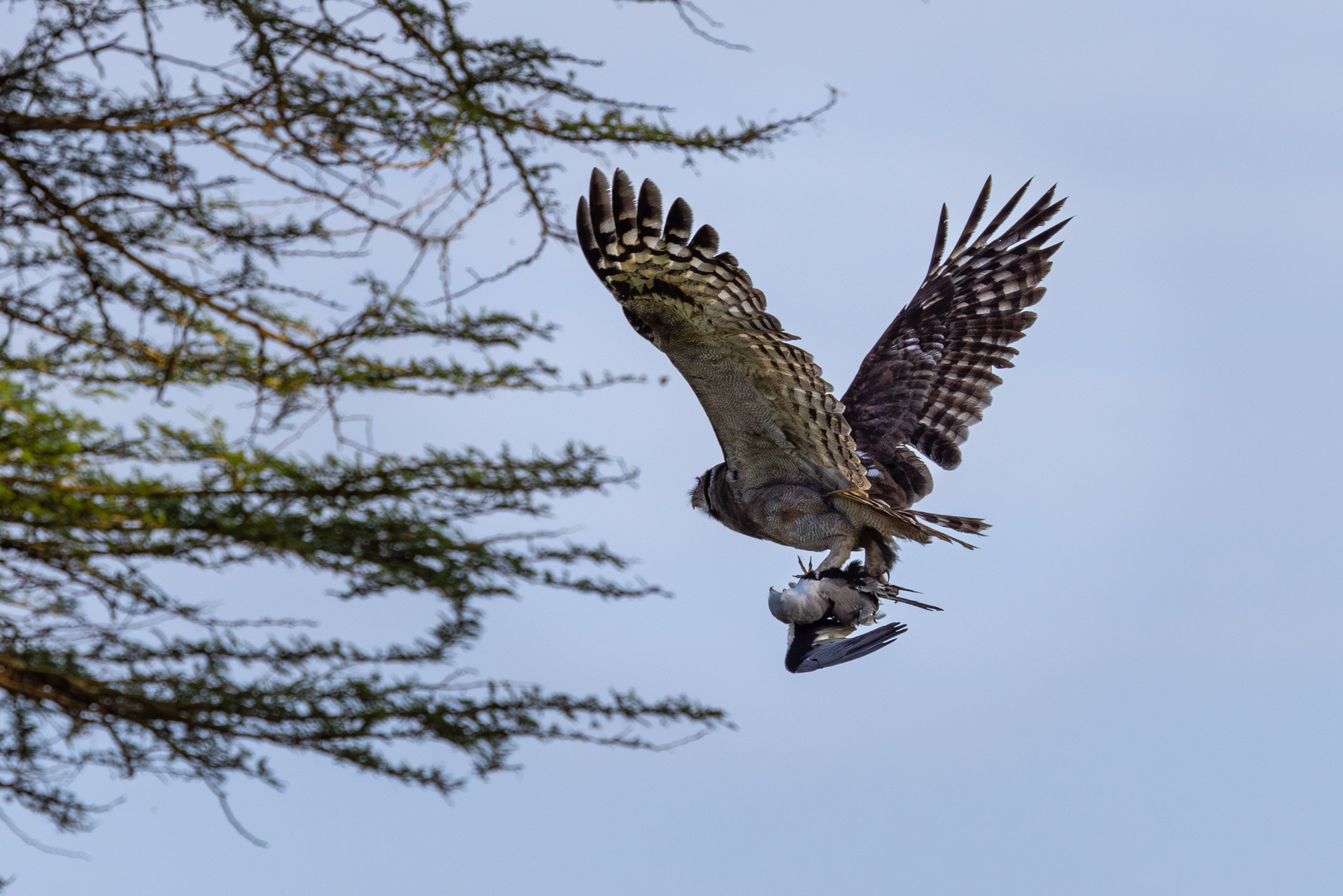
We observed this behaviour firsthand as we witnessed one of these majestic predators near the Angama Amboseli Guest Area, seizing a black-shouldered kite along the shores of Kimana stream and swiftly hoisting it onto a nearby yellow-backed fever tree — a fascinating encounter, I must say.
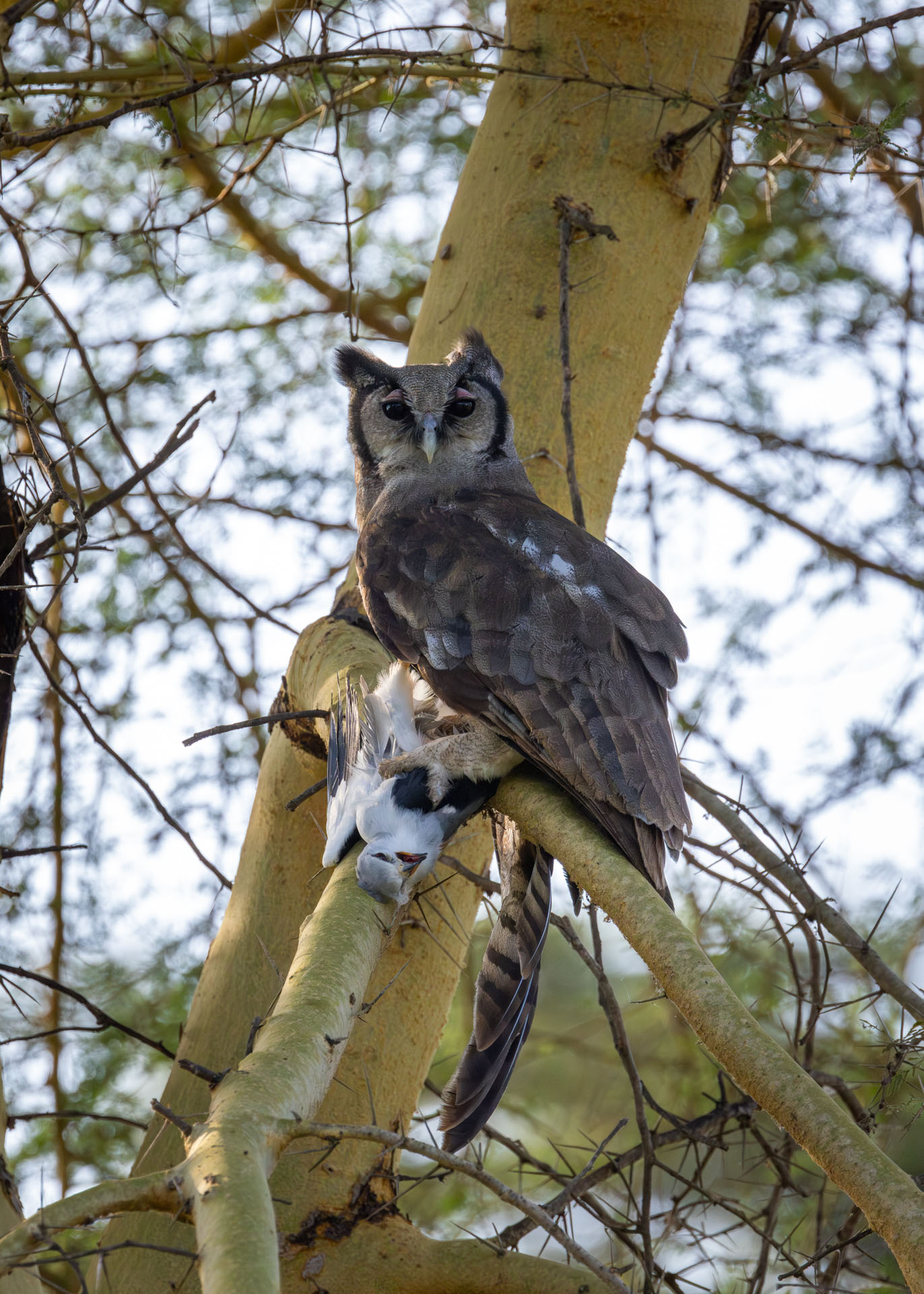
Head Guide Alice and her guests were treated to an exciting sighting of three of the Amboseli Super Tuskers gathered together, which was a spectacular experience for anyone. To the left stood the unmistakable and famous Craig, with Townsend in the middle, and Ganesh — the oldest Super Tusker in Amboseli at 63 years old — displaying his trademark single tusk.

The cheetah population in Amboseli is fairly low, but if you're lucky, you might see them. Here, unlike the Mara, they're mostly active in the early hours of the morning or late evenings when the sun’s heat is bearable. We were very lucky to see this female cheetah soon after she had brought down a gazelle. She must eat quickly to avoid being spotted by the many scavengers in the Park.

There has been an intriguing update on Osunash, the male lion whom we noticed suffering from an unknown skin condition. After consulting the Lion Guardians, they identified the condition as a 'Mango worm' infection, common in dogs and other animals when they come into contact with soil contaminated by urine or faeces. The larvae painlessly burrow under the animal’s skin and continue to develop for two to three weeks. The infection will not be noticeable until the maggots have grown large enough to form small bumps. Fortunately, the infection has begun clearing up on its own, as we observed Osunash this week with much smoother skin and looking much healthier. –Sammy Njoroge
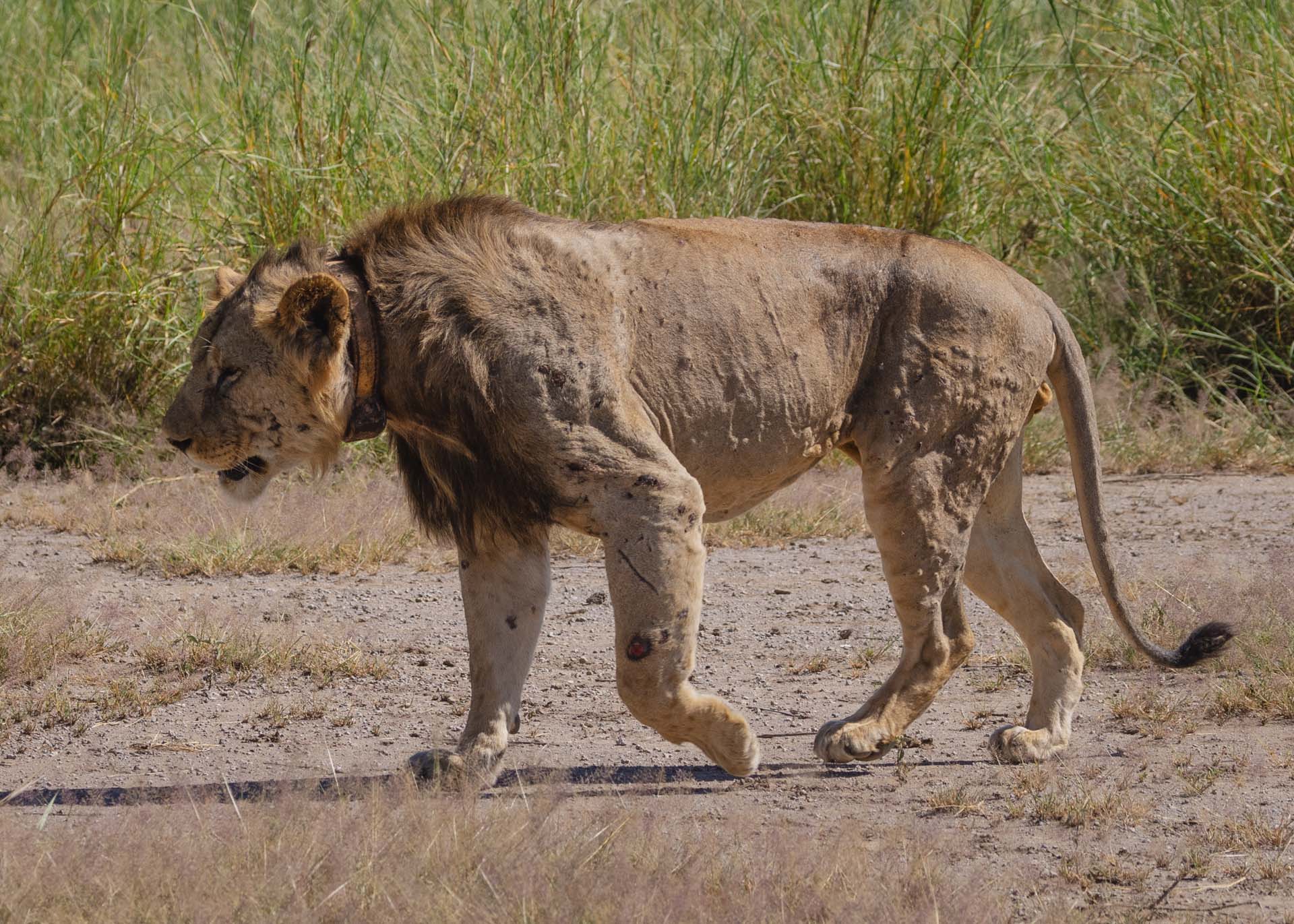

Filed under: This Week at Angama
Subscribe for Weekly Stories
Comments (0):
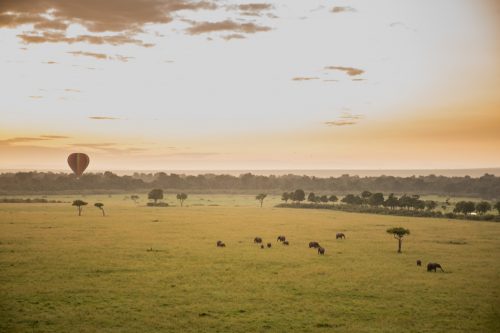
Hot-air Ballooning